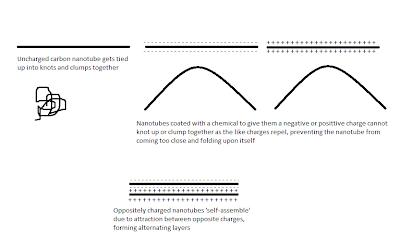Nanoparticles are nanoparticles,
radio waves are radio waves,
whenever the twain meet,
they shall produce heat.
As Shakespearean as that may sound (or not, probably) there is no contest about the veracity of the limerick (never mind the five line rule).
A group of scientists and a radio technician found ways to, shall we say, heat things up.
Scientists at University of Buffalo, New York found a way to control neurons- cells which generate and transmit the electrical signals in the nervous system, using metal nanoparticles and radio waves.
Neurons use electric potential difference to generate and transmit electrical signals. In a nutshell, neurons use ion pumps, proteins present on their peripheral membrane. These ion pumps use energy to export 3 positively-charged Sodium ions (Na+) out of the neuron in exchange for every 2 positively-charged Potassium ions (K+) they import into the neuron. This causes a buildup of excess positive charge outside the neuron and hence a potential difference. To generate an electric impulse, several Na+ specific ion channels in the peripheral membrane are opened. This causes the Na+ ions to flow in, and the charge is equalized across the membrane. This sudden change in the potential difference (depolarisation) generates an electric impulse which then travels along the neuron’s length.
Depolarization can be brought about by a number of ways. Importing positively-charged Calcium ions (Ca2+) or exporting negatively-charged Chloride ions (Cl-) will also do the trick.
With that in mind, the group at Buffalo genetically engineered first fruit flies and then the worm C. elegans to express a protein on its surface which binds Biotin, or vitamin B7 in the vernacular. They then injected streptavidin coated nanoparticles made of Manganese and Iron (MnFe2O4) into the animals. Streptavidin attaches very strongly with biotin. The coated nanoparticles hence circulated and bonded specifically with the biotin labeled neurons and entered these neurons. The animals were then placed in a high powered radio wave field.
Interaction between nanoparticles and biologically harmless radio waves heated the particles to 42ᴼC. The cells remained unharmed at such low temperature.
The increased temperature triggered the temperature sensitive Ca2+ ion channel TRPV1 which consequently opened and let in a flux of Ca2+ ions, depolarizing the neuron and generating an electrical impulse which triggered a neural pathway. The experiment was used to remotely stop a worm and force it to reverse its movement.
In a similar tactic, a radio technician developed his own, custom radio frequency emitting device and in collaboration with University of Pittsburg, used it to heat gold and carbon nanoparticles targeted into rabbit and rat liver cancer cells and raise the cancerous cell's temperature to 400ᴼC, killing it. The temperature, though extremely high, was localized to the cancer cell and left the surrounding cells undamaged.
The two approaches give hope for less damaging cancer therapy as well as ways to manipulate neurons in experiments to learn their function better.
However, as the researchers pointed out, the really tricky part of the ploy is to target specific cells for delivery of the nanoparticles in human subjects if it is to be used as cancer therapy, for it is one thing to raise genetically modified animals to help with the cell targeting, quite another to use the approach in human subjects.
However, the techniques are not without their promise, and if the targeting research pans out, we will be having some powerful therapeutic agents in our hands.
You can read more about the two approaches here and here.

